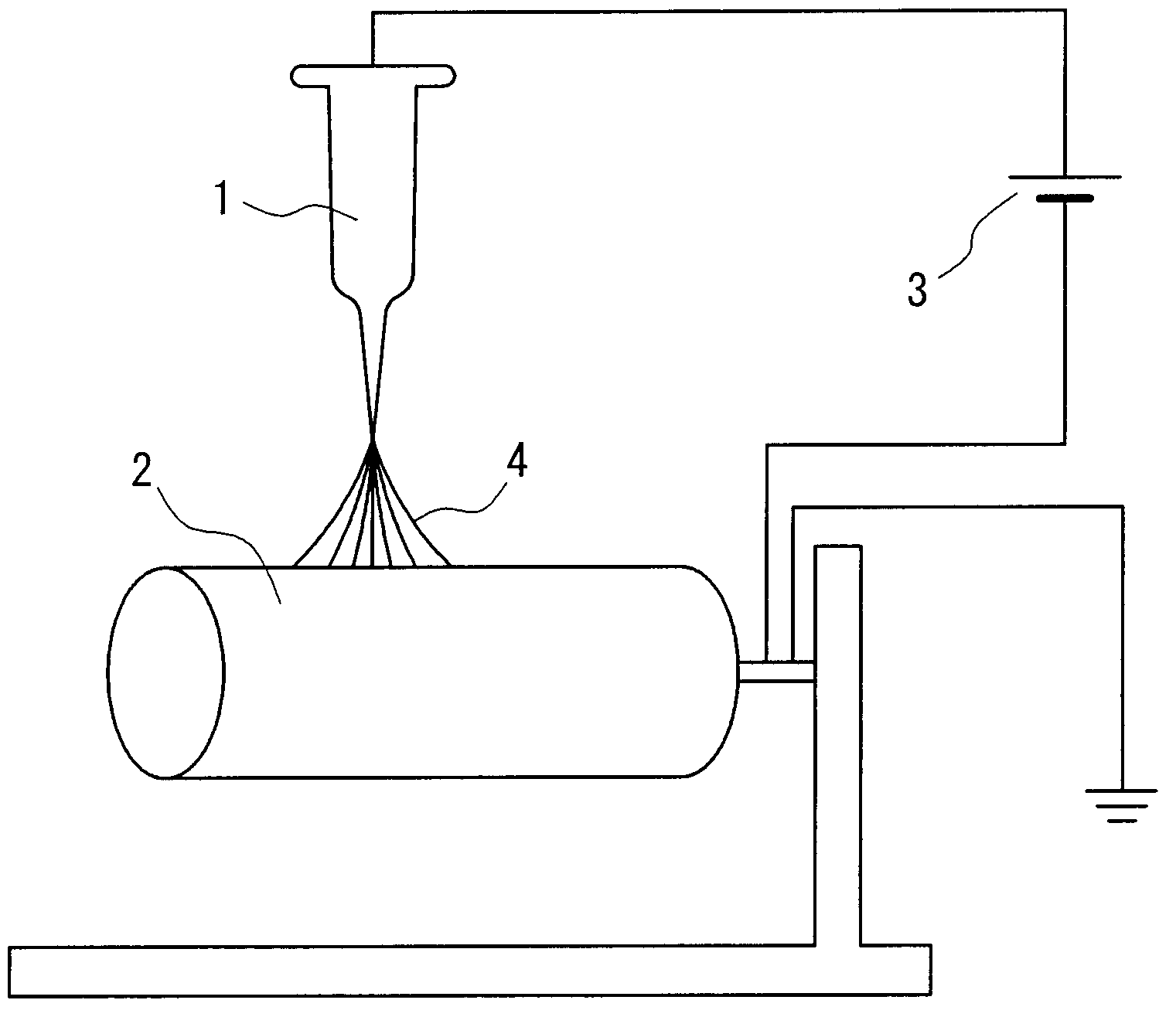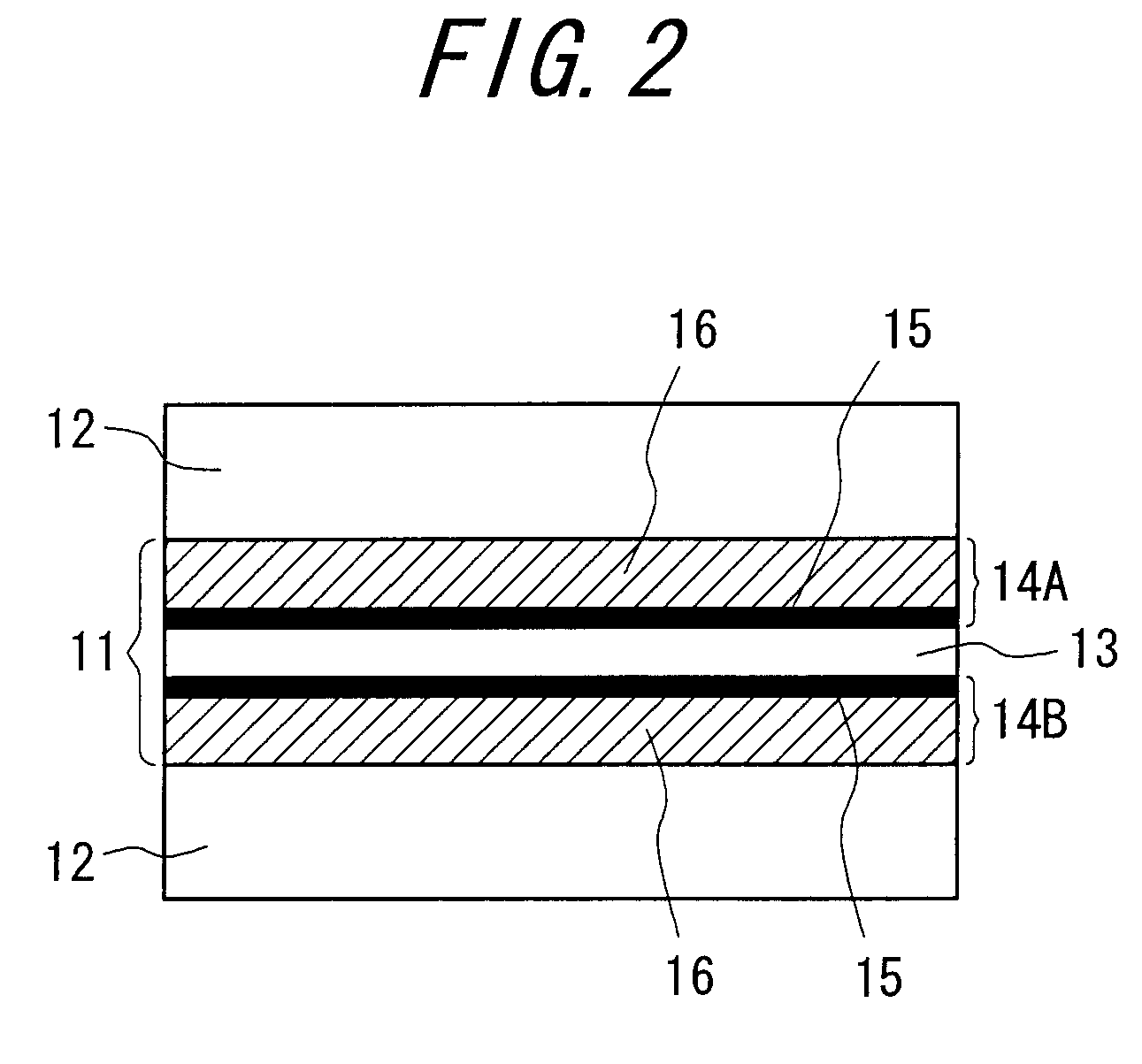Carbon fiber, porous support-carbon fiber composite and method for producing the same as well as catalyst structure, electrode for solid polymer fuel cell and solid polymer fuel cell
a technology of carbon fiber and porous support, which is applied in the direction of catalysts, cell components, physical/chemical process catalysts, etc., can solve the problems of difficult to obtain fibers having a size finer than 1 m, high production instrument cost, and complicated production steps. , to achieve the effect of small fiber diameter, high surface area and short production tim
- Summary
- Abstract
- Description
- Claims
- Application Information
AI Technical Summary
Benefits of technology
Problems solved by technology
Method used
Image
Examples
example 1
[0055]A commercially available aqueous solution of 35 wt % of polyacrylic acid [manufactured by Aldrich] is diluted to prepare a solution containing 10 wt % of polymer material. A deposit layer of nanofibers is formed on a carbon paper [manufactured by Toray Industries, Inc.] under the following conditions by using the polymer material-containing solution according to the electrospinning method shown in FIG. 1 (electrospinning conditions: applied voltage: 20 kV, distance between a tip of a capillary and a substrate: 15 cm). As the membrane thus obtained is observed through SEM, it is confirmed that fibers of polyacrylic acid are obtained at an entangled state. The deposit layer is subjected together with the carbon paper to a firing treatment by heating up to 900° C. at a temperature rising rate of 7° C. / min in an Ar atmosphere and then keeping at 900° C. for 1 hour. As the fired product is observed through SEM, it is confirmed that carbon fibers having a diameter of 1 to 2 μm are o...
example 2
[0058]A commercially available aqueous solution of 35 wt % of polyacrylic acid [manufactured by Aldrich] is diluted and a commercially available carbon black is dispersed therein to prepare a polymer material-containing solution containing 10 wt % of polyacrylic acid and 20 wt % of carbon black. A deposit layer of nanofibers is formed on a carbon paper [manufactured by Toray Industries, Inc.] under the following conditions by using the polymer material-containing solution according to the electrospinning method shown in FIG. 1 (electrospinning conditions: applied voltage: 20 kV, distance between a tip of a capillary and a substrate: 15 cm). As the membrane thus obtained is observed through SEM, it is confirmed that fibers of polyacrylic acid are obtained at an entangled state. The deposit layer is subjected together with the carbon paper to a firing treatment by irradiating microwaves of 28 GHz under a reduced pressure for 1 hour. As the fired product is observed through SEM, it is ...
PUM
| Property | Measurement | Unit |
|---|---|---|
| size | aaaaa | aaaaa |
| size | aaaaa | aaaaa |
| applied voltage | aaaaa | aaaaa |
Abstract
Description
Claims
Application Information
 Login to View More
Login to View More - R&D
- Intellectual Property
- Life Sciences
- Materials
- Tech Scout
- Unparalleled Data Quality
- Higher Quality Content
- 60% Fewer Hallucinations
Browse by: Latest US Patents, China's latest patents, Technical Efficacy Thesaurus, Application Domain, Technology Topic, Popular Technical Reports.
© 2025 PatSnap. All rights reserved.Legal|Privacy policy|Modern Slavery Act Transparency Statement|Sitemap|About US| Contact US: help@patsnap.com



